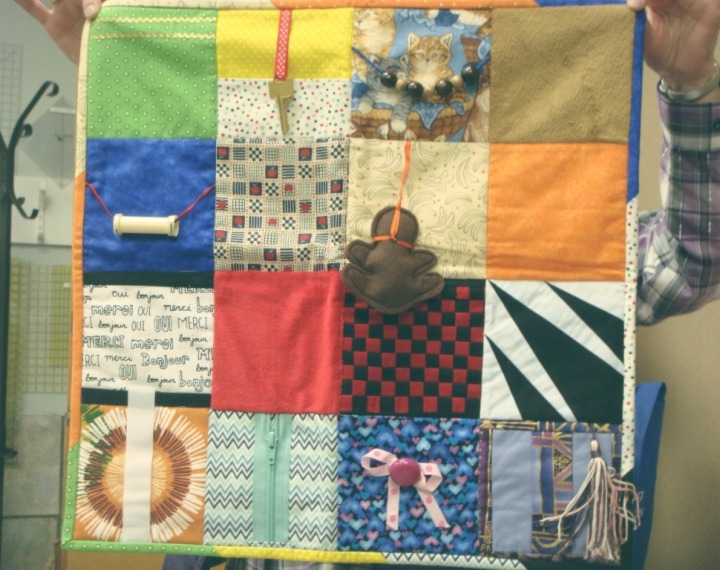What's A Busy Blanket & How Can It Help Those Living With Dementia?
 Just like children are calmed and soothed by their favourite blanket, people living with dementia can be soothed with a busy blanket (or fidget quilt). This is because, during the later stages of dementia, many with the condition seem to fidget constantly. They may pull at their clothing, ball up their hands, or rub their fingers together. What they are doing is looking for something to hold and fiddle with, as this offers a form of comfort.
Just like children are calmed and soothed by their favourite blanket, people living with dementia can be soothed with a busy blanket (or fidget quilt). This is because, during the later stages of dementia, many with the condition seem to fidget constantly. They may pull at their clothing, ball up their hands, or rub their fingers together. What they are doing is looking for something to hold and fiddle with, as this offers a form of comfort.
Part of those that live with dementia, such as Alzheimer's, is feeling agitated and anxious, and being unable to rid yourself of that agitation and stress. This is the reason why many with dementia can sometimes become violent - because they have no outlet for these emotions. Another reason why they can become violent is because of boredom and not being able to express their need for stimulation. It's important to remember that people with dementia have the same needs as everyone else, they just struggle to express them.
A fidget quilt can help with both these things - it can calm and reduce anxiety, as well as providing hours of stimulation. Studies in care homes have shown that busy blankets that have embellishments such as zippers, loops, buttons, and laces are beneficial because they can be constantly played with.
How To Make A Busy Blanket:
Step 1: Select the perfect material
One of the most important parts of creating a busy blanket is choosing the right material. It needs to be a material that will last well, is durable, and is able to be machine washed on a regular basis. Instead of using just one piece of material, place two pieces back to back and then sew them together. For the piece of material that will go on their lap, soft fleece can be a good option. This is because it’s wonderfully soft and cosy. For the piece of material that will have the embellishments on, quilting fabric is ideal. The fabric doesn’t have to be plain, it can have a pattern, picture, or theme on it. Take the person's likes into account and choose a colour and style of fabric that will appeal to them.
Step 2: Decide what embellishments to add
When it comes to selecting what embellishments to add, it’s a good idea to take what the person with dementia fiddles with into account. For example, if they constantly pull the zip on their coat up and down, adding a zipper to the blanket would be a good idea. Anything goes on a fiddle quilt, it’s just a case of determining what the patient would like the most. Some busy blankets have a combination of buttons, zippers, shoelaces, ribbons, beads, rope for plaiting, and toggles. While others only have one or two embellishments on them. Each blanket should reflect the dementia condition and needs. For example, if a resident with dementia is obsessed with coins, it would be a good idea to find a way to incorporate coins into their busy blanket.
Step 3: Personalise it
Personalising busy blankets is important as it can help to bring back happy memories for those on a journey with their dementia. You can add their name to the blanket - a great way to do this is with letter shaped beads threaded onto string, or you could add things that relate to the hobbies that they enjoy, such as gardening or baking, for instance. You could even theme the whole blanket around this. (As well as fidget quilts, there’s also the option of fidget aprons of pillows, depending on the needs of those coping with dementia).





